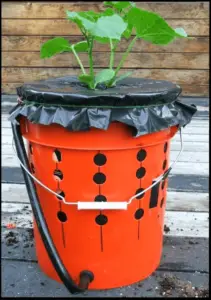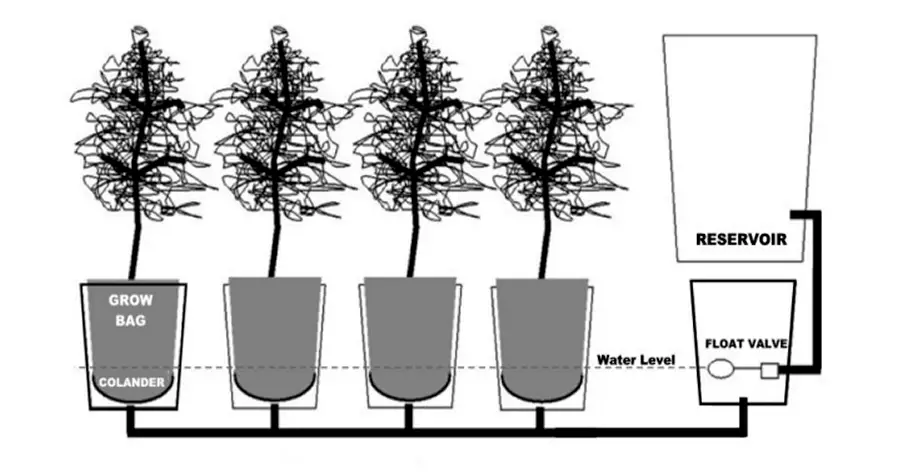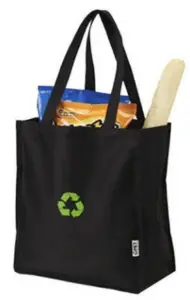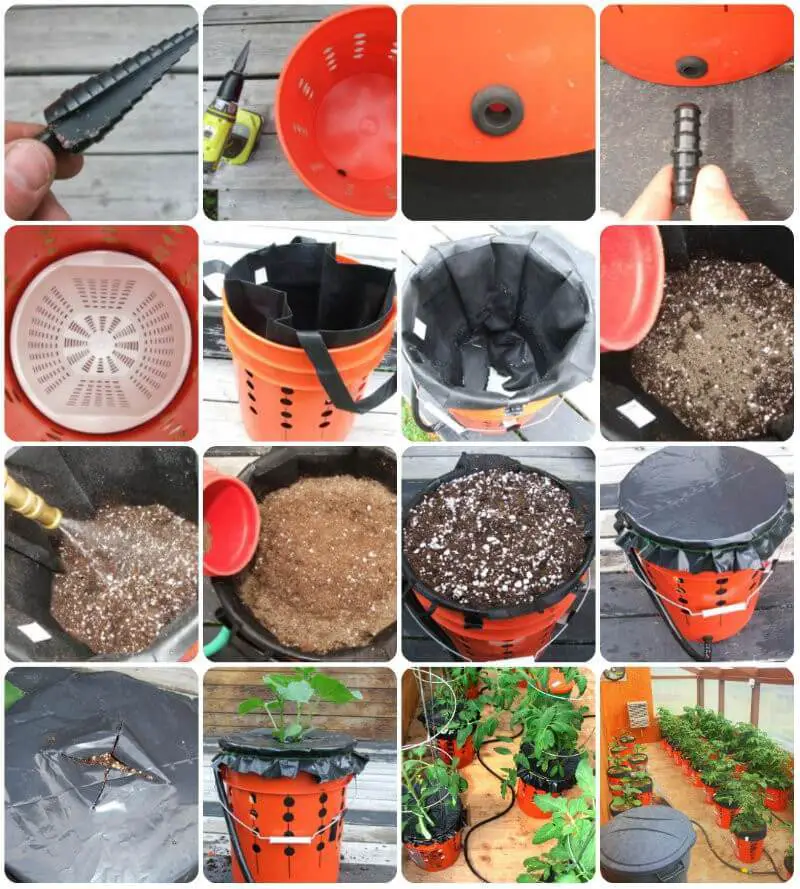Originally published by Homestead & Prepper | January 28, 2016
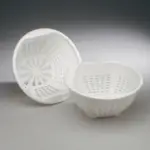 The third key to this system is a plastic kitchen colander, that will hold the fabric shopping bag off of the bottom of the bucket and create a shallow water reservoir in each grow bucket. Almost any large plastic colander can be trimmed to fit inside a 5 gallon bucket with a strong pair of shears. The colander included in all Alaska Grow Buckets kits fit perfectly without trimming.
The third key to this system is a plastic kitchen colander, that will hold the fabric shopping bag off of the bottom of the bucket and create a shallow water reservoir in each grow bucket. Almost any large plastic colander can be trimmed to fit inside a 5 gallon bucket with a strong pair of shears. The colander included in all Alaska Grow Buckets kits fit perfectly without trimming.
Materials List
1. 5 gallon Plastic Bucket
2. 1⁄2” rubber grommet
3. 10” plastic Colander
4. Fabric shopping bag
I strongly encourage that gardeners find and re-purpose used buckets whenever possible and help us to keep plastic containers out of our landfills. Look for the Type 2 HDPE symbol on the bottom to indicate the plastic is safe to use for growing vegetables.
Many bakeries and restaurants have free or very low cost buckets available. Free used buckets are a great way to save. I get new 5 Gallon buckets from Home Depot at a very low price. You can find the rubber grommets, barbed fittings, vinyl tubing, and other parts from many online or local garden suppliers. The fabric grow bags that I use are available at many supermarkets.
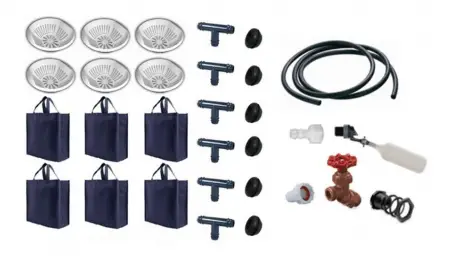 Material Kit Includes Most large plastic colanders can be trimmed to fit in a bucket. All Alaska Grow Buckets kits come with special colanders that fit inside a 5 Gallon bucket without trimming. Complete Alaska Grow Bucket material kits are available here.
Material Kit Includes Most large plastic colanders can be trimmed to fit in a bucket. All Alaska Grow Buckets kits come with special colanders that fit inside a 5 Gallon bucket without trimming. Complete Alaska Grow Bucket material kits are available here.
Tools
1. 3⁄4” Step Drill bit
2. Electric drill
3. Heavy shears or snips if you need to trim a plastic colander.
1. Drill a series of 3/4 inch holes in the bucket as illustrated. Drill as many holes as you like starting 6 inches from the bottom of the bucket. These holes along with the porous fabric bag provide air to the root system and that is the key to this design.
2. The lower portion of the bucket has only one opening. This is the water reservoir. You will drill one hole at the very bottom, with your step drill bit for your fill hose fitting.
3. Add a 1⁄2 inch barbed hose fitting to the grommet. This should provide a snug watertight fitting. Your fitting may differ depending on how you connect your buckets – 1⁄2 inch barbed fittings are available from hydroponic suppliers.
4. Place the special Alaska Grow Buckets plastic colander inside your bucket or trim other colanders to fit.
5. Place the fabric bag inside the bucket. I trimmed off the shopping bag handles.
6. Plug the fill hole and add water to the bottom of your bucket and begin adding your growing mix.
7. Fill the bucket in layers and soak each layer well to activate the wicking property of your soilless mix. Dry mix will not work.
8. Add a layer of slow release natural fertilizer to the bottom layer of grow mix.
9. An additional ring of fertilizer should be added near the top.
10. Continue adding layers of grow mix and wetting down with water.
11.A plastic sheet is added to reduce water loss through evaporation.
12. Cut slits in the plastic for planting.
13. I chose a nice looking Alaska grown cucumber that I purchased from a local garden center to test my design.
14. The bucket was attached to my greenhouse auto-fill reservoir system.
The key to setting up an Alaska Grow Bucket multi container system depends on a simple float valve regulator and a bulk reservoir for automatic watering.
Float system
You can add as many Grow Buckets in your system as space allows, but remember to leave enough space for the plants to grow with adequate air movement for ventilation and to remove excess humidity. Overcrowding impedes ventilation and promotes the spread of fungal disease and blocks light transmission within the plants.
Nutrients can be added in the form of a dry natural slow release fertilizer added to the growing mix or as a water soluble nutrient added to the water reservoir. Any hydroponic reference guide will give nutrient requirements for specific plants.
https://youtu.be/7RH0jh5-tmE

